
Yale University
usinfo | 2012-12-26 16:11
Yale University is an American private Ivy League research university located in New Haven, Connecticut. Founded in 1701 in the Colony of Connecticut, the university is the third-oldest institution of higher education in the United States.
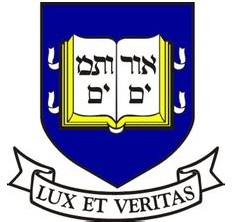
Originally chartered as the "Collegiate School", the institution traces its roots to 17th-century clergymen who sought to establish a college to train clergy and political leaders for the colony. In 1718, the College was renamed "Yale College" to honor a gift from Elihu Yale, a governor of the British East India Company. In 1861, the Graduate School of Arts and Sciences became the first U.S. institution to award the PhD.[8] Yale became a founding member of the Association of American Universities in 1900. Yale College was transformed, beginning in the 1930s, through the establishment of residential colleges: 12 now exist and two more are planned. Yale employs over 1,100 faculty to teach and advise about 5,300 undergraduate and 6,100 graduate and professional students. Almost all tenured professors teach undergraduate courses, more than 2,000 of which are offered annually.
The University's assets include an endowment valued at $19.4 billion as of 2011[update], the second-largest of any academic institution in the world. Yale's system of more than two dozen libraries holds 12.5 million volumes. 49 Nobel Laureates have been affiliated with the University as students, faculty, and staff. Yale has produced many notable alumni, including five U.S. Presidents, 19 U.S. Supreme Court Justices, and several foreign heads of state. Yale Law School is particularly well-regarded and the most selective law school in the United States.
Yale students compete intercollegiately as the Yale Bulldogs in the NCAA Division I Ivy League. The oldest intercollegiate athletic event in the United States is the Yale-Harvard regatta.
History
A Front View of Yale-College and the College Chapel, Daniel Bowen, 1786. OriginsYale traces its beginnings to "An Act for Liberty to Erect a Collegiate School", passed by the General Court of the Colony of Connecticut on October 9, 1701, in an effort to create an institution to train ministers and lay leadership for Connecticut. Soon thereafter, a group of ten Congregationalist ministers: Samuel Andrew, Thomas Buckingham, Israel Chauncy, Samuel Mather, James Noyes, James Pierpont, Abraham Pierson, Noadiah Russell, Joseph Webb and Timothy Woodbridge, all of whom were alumni of Harvard, met in the study of Reverend Samuel Russell in Branford, Connecticut, to pool their books to form the school's first library. The group, led by James Pierpont, is now known as "The Founders".
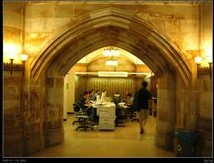
Originally called the "Collegiate School", the institution opened in the home of its first rector, Abraham Pierson, in Killingworth (now Clinton). The school moved to Saybrook, and then Wethersfield. In 1718 the college moved to New Haven, Connecticut.
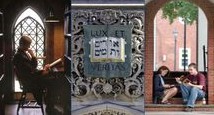
First diploma awarded by Yale College, granted to Nathaniel Chauncey, 1702.Meanwhile, a rift was forming at Harvard between its sixth president Increase Mather and the rest of the Harvard clergy, whom Mather viewed as increasingly liberal, ecclesiastically lax, and overly broad in Church polity. The feud caused the Mathers to champion the success of the Collegiate School in the hope that it would maintain the Puritan religious orthodoxy in a way that Harvard had not.
In 1718, at the behest of either Rector Samuel Andrew or the colony's Governor Gurdon Saltonstall, Cotton Mather contacted a successful businessman in Wales named Elihu Yale to ask him for financial help in constructing a new building for the college. Through the persuasion of Jeremiah Dummer, Yale, who had made a fortune through trade while living in India as a representative of the East India Company, donated nine bales of goods, which were sold for more than £560, a substantial sum at the time. Yale also donated 417 books and a portrait of King George I. Cotton Mather suggested that the school change its name to Yale College in gratitude to its benefactor, and to increase the chances that he would give the college another large donation or bequest. Elihu Yale was away in India when the news of the school's name change reached his home in Wrexham, Wales, a trip from which he never returned. While he did ultimately leave his fortunes to the "Collegiate School within His Majesties Colony of Connecticot", the institution was never able to successfully lay claim to it.
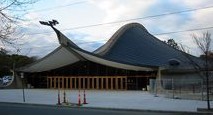
Old Brick Row in 1807.[edit] CurriculumYale was swept up by the great intellectual movements of the period—the Great Awakening and the Enlightenment—thanks to the religious and scientific interests of presidents Thomas Clap and Ezra Stiles. They were both instrumental in developing the scientific curriculum at Yale, while dealing with wars, student tumults, graffiti, "irrelevance" of curricula, desperate need for endowment, and fights with the Connecticut legislature.
Serious American students of theology and divinity, particularly in New England, regarded Hebrew as a classical language, along with Greek and Latin, and essential for study of the Old Testament in the original words. The Reverend Ezra Stiles, president of the College from 1778 to 1795, brought with him his interest in the Hebrew language as a vehicle for studying ancient Biblical texts in their original language (as was common in other schools), requiring all freshmen to study Hebrew (in contrast to Harvard, where only upperclassmen were required to study the language) and is responsible for the Hebrew phrase אורים ותמים (Urim and Thummim) on the Yale seal. Stiles' greatest challenge occurred in July 1779 when hostile British forces occupied New Haven and threatened to raze the College. Fortunately, Yale graduate Edmund Fanning, Secretary to the British General in command of the occupation, interceded and the College was saved. Fanning later was granted an honorary degree LL.D., at 1803, for his efforts.
StudentsAs the only college in Connecticut, Yale educated the sons of the elite. Offenses for which students were punished included cardplaying, tavern-going, destruction of college property, and acts of disobedience to college authorities. During the period, Harvard was distinctive for the stability and maturity of its tutor corps, while Yale had youth and zeal on its side.
The emphasis on classics gave rise to a number of private student societies, open only by invitation, which arose primarily as forums for discussions of modern scholarship, literature and politics. The first such organizations were debating societies: Crotonia in 1738, Linonia in 1753, and Brothers in Unity in 1768.
19th century
Men leaning on the old Yale fence facing Chapel Street, c. 1874.The Yale Report of 1828 was a dogmatic defense of the Latin and Greek curriculum against critics who wanted more courses in modern languages, mathematics, and science. Unlike higher education in Europe, there was no national curriculum for colleges and universities in the United States. In the competition for students and financial support, college leaders strove to keep current with demands for innovation. At the same time, they realized that a significant portion of their students and prospective students demanded a classical background. The Yale report meant the classics would not be abandoned. At the same time, all institutions experimented with changes in the curriculum, often resulting in a dual track. In the decentralized environment of higher education in the United States, balancing change with tradition was a common challenge because no one could afford to be completely modern or completely classical. At the same time a group of professors at Yale and New Haven Congregationalist ministers articulated a conservative response to the changes brought about by the Victorian culture. They concentrated on developing a whole man possessed of religious values sufficiently strong to resist temptations from within, yet flexible enough to adjust to the 'isms' (professionalism, materialism, individualism, and consumerism) tempting him from without.Perhaps the most well-remembered[citation needed] teacher was William Graham Sumner, professor from 1872 to 1909. He taught in the emerging disciplines of economics and sociology to overflowing classrooms. He bested President Noah Porter, who disliked social science and wanted Yale to lock into its traditions of classical education, 1879–81. Porter objected to Sumner's use of a textbook by Herbert Spencer that espoused agnostic materialism because it might intellectually, morally, and religiously harm students.
[edit] Sports and debateThe Revolutionary War hero Nathan Hale (Yale 1773) was the prototype of the Yale ideal in the early 19th century: a manly yet aristocratic scholar, equally well-versed in knowledge and sports, and a patriot who regretted he had but one life to lose for his country. Western painter Frederic Remington (Yale 1900) was an artist whose heroes gloried in combat and tests of strength in the Wild West. The fictional, turn-of-the-20th-century Yale man Frank Merriwell embodied the heroic ideal without racial prejudice, and his fictional successor Frank Stover in the novel Stover at Yale (1911) questioned the business mentality that had become prevalent at the school. Increasingly the students turned to athletic stars as their heroes, especially since winning the big game became the goal of the student body, and the alumni, as well as the team itself.
Along with Harvard and Princeton, Yale students rejected elite British concepts about 'amateurism' in sports and constructed athletic programs that were uniquely American, such as football. The Harvard–Yale football rivalry began in 1875.
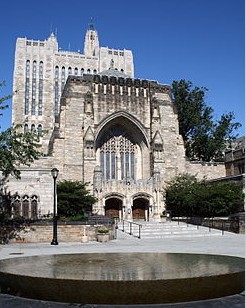
Yale's four-oared crew team, posing with 1876 Centennial Regatta trophy, won at Philadelphia.Between 1892, when Harvard and Yale met in the first intercollegiate debate, and 1909, the year of the first Triangular Debate of Harvard, Yale, and Princeton, the rhetoric, symbolism, and metaphors used in athletics were used to frame these early debates. Debates were covered on front pages of college newspapers and emphasized in yearbooks, and team members even received the equivalent of athletic letters for their jackets. There even were rallies sending off the debating teams to matches. Yet, the debates never attained the broad appeal that athletics enjoyed. One reason may be that debates do not have a clear winner, as is the case in sports, and that scoring is subjective. In addition, with late 19th-century concerns about the impact of modern life on the human body, athletics offered hope that neither the individual nor the society was coming apart.
In 1909–10, football faced a crisis resulting from the failure of the previous reforms of 1905–06 to solve the problem of serious injuries. There was a mood of alarm and mistrust, and, while the crisis was developing, the presidents of Harvard, Yale, and Princeton developed a project to reform the sport and forestall possible radical changes forced by government upon the sport.
President Arthur Hadley of Yale, A. Lawrence Lowell of Harvard, and Woodrow Wilson of Princeton worked to develop moderate changes to reduce injuries. Their attempts, however, were reduced by rebellion against the rules committee and formation of the Intercollegiate Athletic Association. The big three had tried to operate independently of the majority, but changes did reduce injuries.
President Arthur Hadley of Yale, A. Lawrence Lowell of Harvard, and Woodrow Wilson of Princeton worked to develop moderate changes to reduce injuries. Their attempts, however, were reduced by rebellion against the rules committee and formation of the Intercollegiate Athletic Association. The big three had tried to operate independently of the majority, but changes did reduce injuries.
Expansion
Connecticut Hall, oldest building on the Yale campus, built between 1750 and 1753.Yale expanded gradually, establishing the Yale School of Medicine (1810), Yale Divinity School (1822), Yale Law School (1843), Yale Graduate School of Arts and Sciences (1847), the Sheffield Scientific School (1847), and the Yale School of Fine Arts (1869). In 1887, as the college continued to grow under the presidency of Timothy Dwight V, Yale College was renamed Yale University. The university would later add the Yale School of Music (1894), the Yale School of Forestry & Environmental Studies (founded by Gifford Pinchot in 1901), the Yale School of Public Health (1915), the Yale School of Nursing (1923), the Yale School of Drama (1955), the Yale Physician Associate Program (1973), and the Yale School of Management (1976). It would also reorganize its relationship with the Sheffield Scientific School.
Expansion caused controversy about Yale's new roles. Noah Porter, moral philosopher, was president from 1871 to 1886. During an age of tremendous expansion in higher education, Porter resisted the rise of the new research university, claiming that an eager embrace of its ideals would corrupt undergraduate education. Many of Porter's contemporaries criticized his administration, and historians since have disparaged his leadership. Levesque argues Porter was not a simple-minded reactionary, uncritically committed to tradition, but a principled and selective conservative. He did not endorse everything old or reject everything new; rather, he sought to apply long-established ethical and pedagogical principles to a rapidly changing culture. He may have misunderstood some of the challenges of his time, but he correctly anticipated the enduring tensions that have accompanied the emergence and growth of the modern university.

Aerial view from the south, 1906. 20th century Behavioral sciencesBetween 1925 and 1940, philanthropic foundations, especially ones connected with the Rockefellers, contributed about $7 million to support the Yale Institute of Human Relations and the affiliated Yerkes Laboratories of Primate Biology. The money went toward behavioral science research, which was supported by foundation officers who aimed to "improve mankind" under an informal, loosely defined human engineering effort. The behavioral scientists at Yale, led by President James R. Angell and psychobiologist Robert M. Yerkes, tapped into foundation largesse by crafting research programs aimed to investigate, then suggest, ways to control, sexual and social behavior. For example, Yerkes analyzed chimpanzee sexual behavior in hopes of illuminating the evolutionary underpinnings of human development and providing information that could ameliorate dysfunction. Ultimately, the behavioral-science results disappointed foundation officers, who shifted their human-engineering funds toward biological sciences.
[edit] BiologySlack (2003) compares three groups that conducted biological research at Yale during overlapping periods between 1910 and 1970. Yale proved important as a site for this research. The leaders of these groups were Ross Granville Harrison, Grace E. Pickford, and G. Evelyn Hutchinson, and their members included both graduate students and more experienced scientists. All produced innovative research, including the opening of new subfields in embryology, endocrinology, and ecology, respectively, over a long period of time.
Harrison's group is shown to have been a classic research school; Pickford's and Hutchinson's were not. Pickford's group was successful in spite of her lack of departmental or institutional position or power. Hutchinson and his graduate and postgraduate students were extremely productive, but in diverse areas of ecology rather than one focused area of research or the use of one set of research tools. Hutchinson's example shows that new models for research groups are needed, especially for those that include extensive field research.
Harrison's group is shown to have been a classic research school; Pickford's and Hutchinson's were not. Pickford's group was successful in spite of her lack of departmental or institutional position or power. Hutchinson and his graduate and postgraduate students were extremely productive, but in diverse areas of ecology rather than one focused area of research or the use of one set of research tools. Hutchinson's example shows that new models for research groups are needed, especially for those that include extensive field research.
MedicineMilton Winternitz led the Yale Medical School as its dean from 1920 to 1935. An innovative, even maverick, leader, he not only kept the school from going under but also turned it into a first-class research institution.[citation needed] Dedicated to the new scientific medicine established in Germany, he was equally fervent about "social medicine" and the study of humans in their culture and environment. He established the "Yale System" of teaching, with few lectures and fewer exams, and strengthened the full-time faculty system; he also created the graduate-level Yale School of Nursing and the Psychiatry Department, and built numerous new buildings. Progress toward his plans for an Institute of Human Relations, envisioned as a refuge where social scientists would collaborate with biological scientists in a holistic study of humankind, unfortunately lasted for only a few years before the opposition of resentful anti-Semitic colleagues drove him to resign.
FacultyBefore World War II, most elite university faculties counted among their numbers few, if any, Jews, blacks, women, or other minorities; Yale was no exception. By 1980, this condition had been altered dramatically, as numerous members of those groups held faculty positions.
History and American StudiesThe American studies program reflected the worldwide anti-Communist ideological struggle. Norman Holmes Pearson, who worked for the Office of Strategic Studies in London during World War II, returned to Yale and headed the new American studies program, in which scholarship quickly became an instrument of promoting liberty. Popular among undergraduates, the program sought to instruct them in the fundamentals of American civilization and thereby instill a sense of nationalism and national purpose.] Also during the 1940s and 1950s, Wyoming millionaire William R. Coe made large contributions to the American studies programs at Yale University and at the University of Wyoming. Coe was concerned to celebrate the 'values' of the Western United States in order to meet the "threat of communism."
WomenWomen studied at Yale University as early as 1892, in graduate-level programs at the Yale Graduate School of Arts and Sciences.
In 1966, Yale began discussions with its sister school Vassar College about merging to foster coeducation at the undergraduate level. Vassar, then all-female, declined the invitation. Both schools introduced coeducation independently in 1969. Amy Solomon was the first woman to register as a Yale undergraduate; she was also the first woman at Yale to join an undergraduate society, St. Anthony Hall.
A decade into co-education, rampant student assault and harassment by faculty became the impetus for the trailblazing lawsuit Alexander v. Yale. While unsuccessful in the courts, the legal reasoning behind the case changed the landscape of sex discrimination law and resulted in the establishment of Yale's Grievance Board and the Yale Women's Center. In March 2011 a Title IX complaint was filed against Yale.
ClassYale, like other Ivy League schools, instituted policies in the early 20th century designed to increase the proportion of white Protestants of notable families in the student body (see numerus clausus), and was one of the last of the Ivies to eliminate such preferences, beginning with the class of 1970.
Town-gown relationsYale has a complicated relationship with its home city; for example, thousands of students volunteer every year in a myriad of community organizations, but city officials, who decry Yale's exemption from local property taxes, have long pressed the university to do more to help. Under President Levin, Yale has financially supported many of New Haven's efforts to reinvigorate the city. Evidence suggests that the town and gown relationships are mutually beneficial. Still, the economic power of the university increased dramatically with its financial success amid a decline in the local economy.
Yale in the 21st centuryIn 2006, Yale and Peking University (PKU) established a Joint Undergraduate Program in Beijing, an exchange program allowing Yale students to spend a semester living and studying with PKU honor students.
In 2007 outgoing Yale President Rick Levin characterized Yale's institutional priorities: "First, among the nation's finest research universities, Yale is distinctively committed to excellence in undergraduate education. Second, in our graduate and professional schools, as well as in Yale College, we are committed to the education of leaders."
The Boston Globe wrote that "if there's one school that can lay claim to educating the nation's top national leaders over the past three decades, it's Yale."Yale alumni were represented on the Democratic or Republican ticket in every U.S. Presidential election between 1972 and 2004. Yale-educated Presidents since the end of the Vietnam War include Gerald Ford, George H.W. Bush, Bill Clinton, and George W. Bush, and major-party nominees during this period include John Kerry (2004), Joseph Lieberman (Vice President, 2000), and Sargent Shriver (Vice President, 1972). Other Yale alumni who made serious bids for the Presidency during this period include Hillary Rodham Clinton (2008), Howard Dean (2004), Gary Hart (1984 and 1988), Paul Tsongas (1992), Pat Robertson (1988) and Jerry Brown (1976, 1980, 1992).
Several explanations have been offered for Yale’s representation in national elections since the end of the Vietnam War. Various sources note the spirit of campus activism that has existed at Yale since the 1960s, and the intellectual influence of Reverend William Sloane Coffin on many of the future candidates. Yale President Richard Levin attributes the run to Yale’s focus on creating "a laboratory for future leaders," an institutional priority that began during the tenure of Yale Presidents Alfred Whitney Griswold and Kingman Brewster. Richard H. Brodhead, former dean of Yale College and now president of Duke University, stated: "We do give very significant attention to orientation to the community in our admissions, and there is a very strong tradition of volunteerism at Yale." Yale historian Gaddis Smith notes "an ethos of organized activity" at Yale during the 20th century that led John Kerry to lead the Yale Political Union's Liberal Party, George Pataki the Conservative Party, and Joseph Lieberman to manage the Yale Daily News. Camille Paglia points to a history of networking and elitism: "It has to do with a web of friendships and affiliations built up in school." CNN suggests that George W. Bush benefited from preferential admissions policies for the "son and grandson of alumni", and for a "member of a politically influential family." New York Times correspondent Elisabeth Bumiller and The Atlantic Monthly correspondent James Fallows credit the culture of community and cooperation that exists between students, faculty, and administration, which downplays self-interest and reinforces commitment to others.
During the 1988 presidential election, George H. W. Bush (Yale '48) derided Michael Dukakis for having "foreign-policy views born in Harvard Yard's boutique". When challenged on the distinction between Dukakis's Harvard connection and his own Yale background, he said that, unlike Harvard, Yale's reputation was "so diffuse, there isn't a symbol, I don't think, in the Yale situation, any symbolism in it" and said Yale did not share Harvard's reputation for "liberalism and elitism". In 2004 Howard Dean stated, "In some ways, I consider myself separate from the other three (Yale) candidates of 2004. Yale changed so much between the class of '68 and the class of '71. My class was the first class to have women in it; it was the first class to have a significant effort to recruit African Americans. It was an extraordinary time, and in that span of time is the change of an entire generation".
In 2009, former British Prime Minister Tony Blair picked Yale as one location – the others are Britain's Durham University and Universiti Teknologi Mara – for the Tony Blair Faith Foundation's United States Faith and Globalization Initiative. As of 2009, former Mexican President Ernesto Zedillo is the director of the Yale Center for the Study of Globalization and teaches an undergraduate seminar, "Debating Globalization". As of 2009, former presidential candidate and DNC chair Howard Dean teaches a residential college seminar, "Understanding Politics and Politicians." Also in 2009, an alliance was formed among Yale, University College London, and both schools’ affiliated hospital complexes to conduct research focused on the direct improvement of patient care—a growing field known as translational medicine. President Richard Levin noted that Yale has hundreds of other partnerships across the world, but "no existing collaboration matches the scale of the new partnership with UCL".
In July 2012, the Peking University-Yale University Joint Undergraduate Program in Beijing ended due to weak participation.
Administration and organizationThe President and Fellows of Yale College, also known as the Yale Corporation, is the governing board of the University.
Yale's president Richard C. Levin is one of the highest paid university presidents in the United States with a 2008 salary of $1.5 million.
The Yale Provost's Office has launched several women into prominent university presidencies. In 1977 Hanna Holborn Gray was appointed acting President of Yale from this position, and went on to become President of the University of Chicago, the first woman to be full president of a major university. In 1994 Yale Provost Judith Rodin became the first female president of an Ivy League institution at the University of Pennsylvania. In 2002 Provost Alison Richard became the Vice Chancellor of the University of Cambridge. In 2004, Provost Susan Hockfield became the President of the Massachusetts Institute of Technology. In 2007 Deputy Provost Kim Bottomly was named President of Wellesley College.
In 2008 Provost Andrew Hamilton was confirmed to be the Vice Chancellor of the University of Oxford. Former Dean of Yale College Richard H. Brodhead serves as the President of Duke University.
Staff and labor unionsMain article: Federation of Hospital and University Employees
Much of Yale University's staff, including most maintenance staff, dining hall employees, and administrative staff, are unionized. Clerical and technical employees are represented by Local 34 of Unite Here and service and maintenance workers by Local 35 of the same international. Together with the Graduate Employees and Students Organization (GESO), an unrecognized union of graduate employees, Locals 34 and 35 make up the Federation of Hospital and University Employees. Also included in FHUE are the dietary workers at Yale-New Haven Hospital, who are members of 1199 SEIU. In addition to these unions, officers of the Yale University Police Department are members of the Yale Police Benevolent Association, which affiliated in 2005 with the Connecticut Organization for Public Safety Employees. Finally, Yale security officers voted to join the International Union of Security, Police and Fire Professionals of America in fall 2010 after the National Labor Relations Board ruled they could not join AFSCME; the Yale administration contested the election.
Yale has a history of difficult and prolonged labor negotiations, often culminating in strikes. There have been at least eight strikes since 1968, and The New York Times wrote that Yale has a reputation as having the worst record of labor tension of any university in the U.S. Yale's unusually large endowment exacerbates the tension over wages. Moreover, Yale has been accused of failing to treat workers with respect. In a 2003 strike, however, the university claimed that more union employees were working than striking. Professor David Graeber was 'retired' after he came to the defense of a student who was involved in campus labor issues.
Campus
Yale Law School.Yale's central campus in downtown New Haven covers 260 acres (1.1 km2). An additional 500 acres (2.0 km2) includes the Yale golf course and nature preserves in rural Connecticut and Horse Island.
Yale is noted for its largely Collegiate Gothic campus as well as for several iconic modern buildings commonly discussed in architectural history survey courses: Louis Kahn's Yale Art Gallery and Center for British Art, Eero Saarinen's Ingalls Rink and Ezra Stiles and Morse Colleges, and Paul Rudolph's Art & Architecture Building. Yale also owns and has restored many noteworthy 19th-century mansions along Hillhouse Avenue, which was considered the most beautiful street in America by Charles Dickens when he visited the United States in the 1840s.
Many of Yale's buildings were constructed in the Collegiate Gothic architecture style from 1917 to 1931, financed largely by Edward S. Harkness Stone sculpture built into the walls of the buildings portray contemporary college personalities such as a writer, an athlete, a tea-drinking socialite, and a student who has fallen asleep while reading. Similarly, the decorative friezes on the buildings depict contemporary scenes such as policemen chasing a robber and arresting a prostitute (on the wall of the Law School), or a student relaxing with a mug of beer and a cigarette. The architect, James Gamble Rogers, faux-aged these buildings by splashing the walls with acid, deliberately breaking their leaded glass windows and repairing them in the style of the Middle Ages, and creating niches for decorative statuary but leaving them empty to simulate loss or theft over the ages. In fact, the buildings merely simulate Middle Ages architecture, for though they appear to be constructed of solid stone blocks in the authentic manner, most actually have steel framing as was commonly used in 1930. One exception is Harkness Tower, 216 feet (66 m) tall, which was originally a free-standing stone structure. It was reinforced in 1964 to allow the installation of the Yale Memorial Carillon.
Other examples of the Gothic (also called neo-Gothic and collegiate Gothic) style are on Old Campus by such architects as Henry Austin, Charles C. Haight and Russell Sturgis. Several are associated with members of the Vanderbilt family, including Vanderbilt Hall, Phelps Hall, St. Anthony Hall (a commission for member Frederick William Vanderbilt), the Mason, Sloane and Osborn laboratories, dormitories for the Sheffield Scientific School (the engineering and sciences school at Yale until 1956) and elements of Silliman College, the largest residential college.
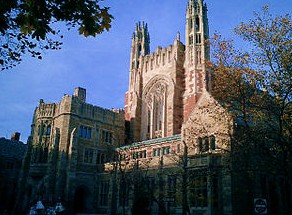
Statue of Nathan Hale in front of Connecticut HallThe oldest building on campus, Connecticut Hall (built in 1750), is in the Georgian style. Georgian-style buildings erected from 1929 to 1933 include Timothy Dwight College, Pierson College, and Davenport College, except the latter's east, York Street façade, which was constructed in the Gothic style.
The Beinecke Rare Book and Manuscript Library, designed by Gordon Bunshaft of Skidmore, Owings, and Merrill, is one of the largest buildings in the world reserved exclusively for the preservation of rare books and manuscripts. It is located near the center of the University in Hewitt Quadrangle, which is now more commonly referred to as "Beinecke Plaza".
The library's six-story above-ground tower of book stacks is surrounded by a windowless rectangular building with walls made of translucent Vermont marble, which transmit subdued lighting to the interior and provide protection from direct light, while glowing from within after dark.
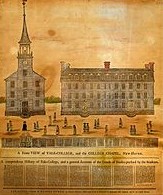
Interior of Beinecke Library.The sculptures in the sunken courtyard by Isamu Noguchi are said to represent time (the pyramid), the sun (the circle), and chance (the cube).
Alumnus Eero Saarinen, Finnish-American architect of such notable structures as the Gateway Arch in St. Louis, Washington Dulles International Airport main terminal, Bell Labs Holmdel Complex and the CBS Building in Manhattan, designed Ingalls Rink at Yale and the newest residential colleges of Ezra Stiles and Morse. These latter were modelled after the medieval Italian hilltown of San Gimignano – a prototype chosen for the town's pedestrian-friendly milieu and fortress-like stone towers. These tower forms at Yale act in counterpoint to the college's many Gothic spires and Georgian cupolas.
Yale's Office of Sustainability develops and implements sustainability practices at Yale. Yale is committed to reduce its greenhouse gas emissions 10% below 1990 levels by the year 2020. As part of this commitment, the university allocates renewable energy credits to offset some of the energy used by residential colleges. Eleven campus buildings are candidates for LEED design and certification. Yale Sustainable Food Project initiated the introduction of local, organic vegetables, fruits, and beef to all residential college dining halls. Yale was listed as a Campus Sustainability Leader on the Sustainable Endowments Institute’s College Sustainability Report Card 2008, and received a “B+” grade overall.
Grove Street Cemetery, New Haven
Marsh Botanical Garden
Yale Sustainable Food Project Farm
[edit] Notable nonresidential campus buildingsNotable nonresidential campus buildings and landmarks include Battell Chapel, Beinecke Rare Book Library, Harkness Tower, Ingalls Rink, Kline Biology Tower, Osborne Memorial Laboratories, Payne Whitney Gymnasium, Peabody Museum of Natural History, Sterling Hall of Medicine, Sterling Law Buildings, Sterling Memorial Library, Woolsey Hall, Yale Center for British Art, Yale University Art Gallery, and Yale Art & Architecture Building.
Yale's secret society buildings (some of which are called "tombs") were built both to be private yet unmistakable. A diversity of architectural styles is represented: Berzelius, Donn Barber in an austere cube with classical detailing (erected in 1908 or 1910); Book and Snake, Louis R. Metcalfe in a Greek Ionic style (erected in 1901); Elihu, architect unknown but built in a Colonial style (constructed on an early 17th century foundation although the building is from the 18th century); Mace and Chain, in a late colonial, early Victorian style (built in 1823). Interior moulding is said to have belonged to Benedict Arnold; Manuscript Society, King Lui-Wu with Dan Kniley responsible for landscaping and Josef Albers for the brickwork intaglio mural. Building constructed in a mid-century modern style; Scroll and Key, Richard Morris Hunt in a Moorish- or Islamic-inspired Beaux-Arts style (erected 1869–70); Skull and Bones, possibly Alexander Jackson Davis or Henry Austin in an Egypto-Doric style utilizing Brownstone (in 1856 the first wing was completed, in 1903 the second wing, 1911 the Neo-Gothic towers in rear garden were completed); St. Elmo, (former tomb) Kenneth M. Murchison, 1912, designs inspired by Elizabethan manor. Current location, brick colonial; and Wolf's Head, Bertram Grosvenor Goodhue (erected 1923-4).
The Starr Reading Room
Harkness Tower
The Library Circulation Desk
Memorial Chapel on Yale's Old Campus
The Yale School of Management
Yale School of Architecture
Yale School of Forestry
Connecticut Hall
Yale Peabody Museum
The Yale Bowl
Campus safetyIn addition to the Yale University Police Department, founded in 1894, a variety of safety services are available including blue phones, a safety escort, and a shuttle service.
In the 1970s and 1980s, poverty and violent crime rose in New Haven, dampening Yale's student and faculty recruiting efforts.Between 1990 and 2006, New Haven's crime rate fell by half, helped by a community policing strategy by the New Haven police and Yale's campus became the safest among the Ivy League and other peer schools. Nonetheless, across the board, the city of New Haven has retained the highest levels of crime of any Ivy League city for more than a decade.
Between 2002 and 2004, Yale reported 14 violent crimes (homicide, aggravated assault, or sex offenses); in comparison, Harvard reported 83 such incidents, Princeton 24, and Stanford 54. The incidence of nonviolent crime (burglary, arson, and motor vehicle theft) was also lower than most of its peer schools.
In 2004 a national non-profit watchdog group called Security on Campus filed a complaint with the U.S. Department of Education, accusing Yale of under-reporting rape and sexual assaults.
Academics[edit] Admissions
Yale University's Sterling Memorial Library, as seen from Maya Lin's sculpture, Women's Table. The sculpture records the number of women enrolled at Yale over its history; female undergraduates were not admitted until 1969.For the Class of 2016, Yale accepted 1,975 students out of a record 28,975 total applications, hitting a record-low acceptance rate of 6.8%.
The university is one of only seven institutions of higher education in the world that is need blind and full-need to all of its applicants, including international students. Through its program of need-based financial aid, Yale commits to meet the full demonstrated financial need of all applicants, and more than half of Yale students receive financial assistance. Most financial aid is in the form of grants and scholarships that do not need to be paid back to the university, and the average scholarship for the 2011–2012 school year was $35,400. More than 750 students in Yale College are expected to have $0 parental contribution.
Half of all Yale undergraduates are women, more than 30% are minorities, and 8% are international students. Fifty-five percent attended public schools and 45% attended private, religious, or international schools. In addition, Yale College admits a small group of nontraditional students each year, through the Eli Whitney Students Program.
Collections
The Night Café, Vincent van Gogh, 1888, Yale Art Gallery.Yale University Library, which holds over 12 million volumes, is the second-largest university collection in the United States. The main library, Sterling Memorial Library, contains about 4 million volumes, and other holdings are dispersed at subject libraries.
Rare books are found in a number of Yale collections. The Beinecke Rare Book Library has a large collection of rare books and manuscripts. The Harvey Cushing/John Hay Whitney Medical Library includes important historical medical texts, including an impressive collection of rare books, as well as historical medical instruments. The Lewis Walpole Library contains the largest collection of 18th‑century British literary works. The Elizabethan Club, technically a private organization, makes its Elizabethan folios and first editions available to qualified researchers through Yale.
Yale's museum collections are also of international stature. The Yale University Art Gallery is the country's first university-affiliated art museum. It contains more than 180,000 works, including old masters and important collections of modern art, in the Swartout and Kahn buildings. The latter, Louis Kahn's first large-scale American work (1953), was renovated and reopened in December 2006. The Yale Center for British Art, the largest collection of British art outside of the UK, grew from a gift of Paul Mellon and is housed in another Kahn-designed building.
The Peabody Museum of Natural History in New Haven is used by school children and contains research collections in anthropology, archaeology, and the natural environment. The Yale University Collection of Musical Instruments, affiliated with the Yale School of Music, is perhaps the least well-known of Yale's collections, because its hours of opening are restricted.
The museums also house the artifacts brought to the United States from Peru by Yale history professor Hiram Bingham in his expedition to Machu Picchu in 1912 – when the removal of such artifacts was legal. Peru would now like to have the items returned; Yale has so far declined.In November 2010, a Yale University representative agreed to return the artifacts to a Peruvian university.
University rankingsUniversity rankings
The U.S. News & World Report ranked Yale third among national universities in 2012, as it has for each of the past fifteen years, in every case behind Princeton and Harvard. It was ranked fourth in the 2011 QS World University Rankings and tenth in the 2010 Times Higher Education World University Rankings.Shanghai Jiao Tong University’s Academic Ranking of World Universities, placed Yale at 11 in 2010. ARWU also ranked Yale 25th in Natural Sciences and Mathematics, 76–100th in Engineering/Technology and Computer Sciences, 9th in Life and Agriculture Sciences, 21st in Clinical Medicine and Pharmacy, and 8th in Social Sciences worldwide.
Faculty, research, and intellectual traditionsThe college is, after normalization for institution size, the tenth-largest baccalaureate source of doctoral degree recipients in the United States, and the largest such source within the Ivy League.
Yale's English and Comparative Literature departments were part of the New Criticism movement. Of the New Critics, Robert Penn Warren, W.K. Wimsatt, and Cleanth Brooks were all Yale faculty. Later, the Yale Comparative literature department became a center of American deconstruction. Jacques Derrida, the father of deconstruction, taught at the Department of Comparative Literature from the late seventies to mid-1980s. Several other Yale faculty members were also associated with deconstruction, forming the so-called "Yale School". These included Paul de Man who taught in the Departments of Comparative Literature and French, J. Hillis Miller, Geoffrey Hartman (both taught in the Departments of English and Comparative Literature), and Harold Bloom (English), whose theoretical position was always somewhat specific, and who ultimately took a very different path from the rest of this group. Yale's history department has also originated important intellectual trends. Historians C. Vann Woodward and David Brion Davis are credited with beginning in the 1960s and 1970s an important stream of southern historians; likewise, David Montgomery, a labor historian, advised many of the current generation of labor historians in the country. Yale's Music School and Department fostered the growth of Music Theory in the latter half of the 20th century. The Journal of Music Theory was founded there in 1957; Allen Forte and David Lewin were influential teachers and scholars.
Since summer 2010, Yale has also been host to Yale Publishing Course.
Campus lifeYale is a medium-sized research university, most of whose students are in the graduate and professional schools. Undergraduates, or Yale College students, come from a variety of ethnic, national, and socioeconomic backgrounds. Of the 2010–2011 freshman class, 10% are non‑U.S. citizens, while 54% went to public high schools. Yale is also an open campus for the gay community. Its active LGBT community first received wide publicity in the late 1980s, when Yale obtained a reputation as the "gay Ivy", due largely to a 1987 Wall Street Journal article written by Julie V. Iovine, an alumna and the spouse of a Yale faculty member. During the same year, the University hosted a national conference on gay and lesbian studies and established the Lesbian and Gay Studies Center. The slogan "One in Four, Maybe More" was coined by the campus gay community. While the community in the 1980s and early 1990s was very activist, today most LGBT events have become part of the general campus social scene.For example, the annual LGBT Co-op Dance attracts straight as well as gay students.
Yale has a system of 12 residential colleges, instituted in 1933 through a grant by Yale graduate Edward S. Harkness, who admired the college systems at Oxford and Cambridge. Each college has a Dean, Master, affiliated faculty, and resident Fellows. Each college also features distinctive architecture, secluded courtyards, a commons room, meeting rooms/classrooms, and a dining hall; in addition some have chapels, libraries, squash courts, pool tables, short order dining counters, cafes, or darkrooms. Each college at Yale offers its own seminars, social events, and Master's Teas, and most of them are open to students from other residential colleges. However, Yale remains a unitary university, while Oxford and Cambridge colleges are self-governed charitable institutions in their own right.
All of Yale's 2,000 undergraduate courses are open to members of any college.
The dominant architecture of the residential colleges is Neo-Gothic, in line with the characteristic architecture of the university. Several colleges have other period architecture, such as Georgian and Federal, and the two most recent (Morse and Ezra Stiles) have modernist concrete exteriors.
Students are assigned to a residential college in their freshman year. Only two residential colleges (Silliman and Timothy Dwight) house freshmen. The majority of on-campus freshmen live on the "Old Campus", an extensive quadrangle formed by older buildings. Each residential college has its own dining hall, but students are permitted to eat in any residential college dining hall or the large dining facility called "Commons".
Residential colleges are named for important figures or places in university history or notable alumni.
Share this page



















